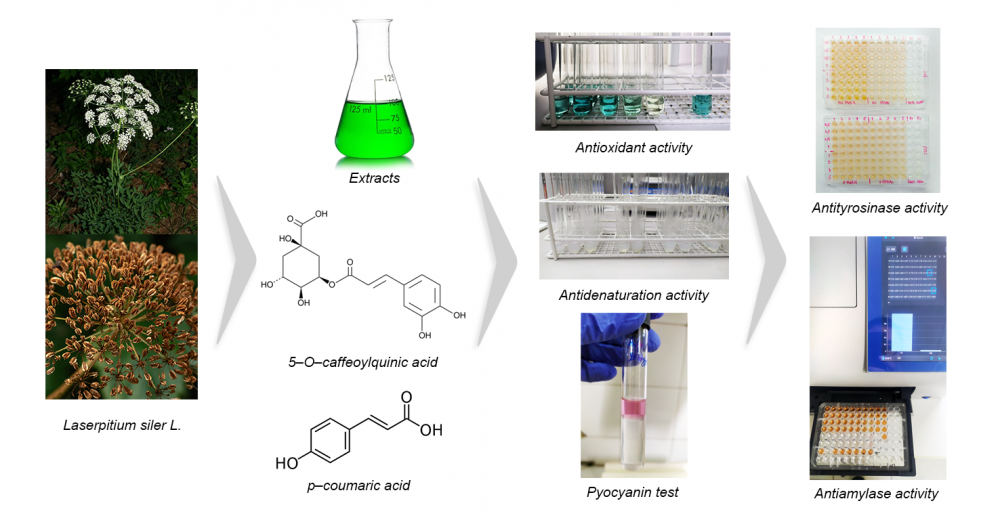JOURNAL 2528
Records of Natural Products
Year: 2023 Issue: 3 May-June
p.453 - 475
Viewed 3596 times.
GRAPHICAL ABSTRACT

ABSTRACT
The traditional European medicinal plant Laserpitium siler L. was studied for the first time for the chemical composition and in vitro biological potential of extracts from fruits and aerial parts. Eight extracts were subjected to spectrophotometric detection and LC-MS quantification of phenolics. The bioactivity assessment comprised antioxidant, antimicrobial, anti-denaturation, acetylcholinesterase, tyrosinase, α-amylase, and α-glucosidase inhibition assays. The spectrophotometric analyses showed that the alcoholic extracts contained the most phenolic acids and coumarins. Among the twenty quantified compounds in the methanolic extracts, chlorogenic acid (29.098 mg/kg in the fruits; 47.438 mg/kg in the aerial parts) and p-coumaric acid (7.468 mg/kg in the fruits; 9.482 mg/kg in the aerial parts) were the most abundant. The DPPH/ABTS/BBT tests showed the strongest antioxidant effect of the methanolic extract of the aerial parts. The results of the microdilution assay referred to stronger antibacterial than antifungal activity, with the essential oil being as effective as the antibiotics used. The extracts expressed promising activity against P. aeruginosa PAO1 biofilm formation and pyocyanin synthesis. The prevention of BSA denaturation by the ethanolic extracts was comparable to diclofenac (91.08%-fruits, 95.08%-aerial parts, and 95.60%-diclofenac). IC50 values showed greater enzyme inhibitory potential of aerial parts and the highest reduction of α-glucosidase activity.
KEYWORDS- Laserpitium siler
- phenolics
- LC-MS
- antioxidant
- antimicrobial
- enzyme inhibitory activity